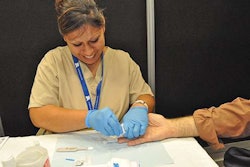Pancreatitis means “inflammation of the pancreas.” There are several causes, all of which require immediate medical attention, and pancreatic episodes are often misdiagnosed, or ignored, because the symptoms are sometimes so similar to other conditions.
Understanding the function of the pancreas can help you determine if you have a problem. The two main functions of the pancreas are to secrete enzymes that aid in digestion and to produce cells responsible for insulin (which raises blood sugar) and glucagon (which lowers blood sugar). A balance of the blood sugars is imperative for proper brain function, so the pancreas is a pretty important little piece of equipment.
For the most part, it lies quietly cradled between the stomach and the top loop of the small intestine, sharing a cozy spot with your gall bladder and a couple of essential arteries, producing essential endocrines and exocrines, helping digestion and the burning of body fuel along by keeping the delicate sugary balance in your blood. People of a healthy weight who practice clean diets and drink only moderately rarely suffer from problems or flare-ups, and may go an entire lifetime without thinking of their pancreas even once.
In fact, 80 percent of pancreas-related illnesses are attributed to alcohol use or gallstones. The number one common factor in chronic (or long-lasting and lingering) pancreatitis is alcohol use. Acute (or sudden-onset episodes) are most often associated with a gall bladder inflammation or gall stones.
There are medications noted for pancreatic reaction, namely prednisone (a corticosteriod), valproic acid (an anticonvulsant) and metformin, (an anti-hyperglycemic). There are also a number of infectious causes, including herpes simplex virus, salmonella, and toxoplasma. An inherited form of pancreatitis is uncommon and accounts for less than 3 percent of diagnosed cases.
Treating an acute episode can be as simple as restricting food intake for a week or so, and making diet changes, or as complicated as having to spend a week in the hospital with intravenous fluids, medications and oxygen.
The most common symptoms of pancreatitis are severe burning and pain in the upper left quadrant of the torso that radiates to the back, coupled with nausea and vomiting that is worsened with eating. These also happen to be symptoms of a gall bladder attack, and since the two are closely associated, it wouldn’t hurt to have an abdominal ultrasound, which shows an inflamed pancreas clearly. It is convenient, simple, non-invasive, and highly recommended if you experience these symptoms.
Although pain generally drives the patient to treatment before necrosis sets in, left untreated, the pancreas will quite literally die and cease to function, which causes all kinds of systemic chaos and can result in death.
The pancreas can be transplanted fully from a recently deceased individual, or a partial pancreatic donation can be made from a living donor. Taking care of the pancreas you have is obviously easier than getting a new one, and can be achieved with the exact same basic principals as taking care of every other organ or gland in your body. Eat a balanced diet, avoid excessive animal fats, drink plenty of water, get plenty of exercise, don’t smoke, and drink alcohol only in moderation. Keep your pancreas happy.










